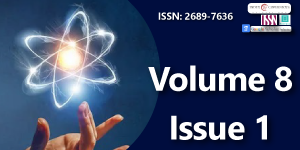Magnitude assessment for stellarquakes
Main Article Content
Abstract
Abstract
The extensive expansion of astrophysical investigations during the last years is a factor that needs a new approach and preparation to meet new challenges. The missions of telescopes Hubble and Web, the increased resolution of on-land telescopes, the new missions to the Sun, etc. reveal the possibility of knowing much more about the stars and star quakes. New unexpected seismic events have been detected on the Sun. From time to time Sun protuberances generate seismic waves very similar to those observed on the Earth’s oceans. This similarity is remarkable and gives the possibility to use the earthquake magnitude scale to assess the magnitude of sunquakes generated by solar flares. Magnitude as a seismic measurable unit was suggested by Charles Richter and Beno Gutenberg by the analogy of stars’ magnitude. The dependence of the earthquake magnitude to seismic energy and vice versa is an achievement that gives the way for the empirical transformation from magnitudes to seismic energy and vice versa. Sunquakes also contain other carried energy substances, but assuming only energy carried by the surface seismic waves it is a real possibility to perform the same approach for the assessment of sunquakes by a magnitude scale. The magnitude assessment of this research was limited only to stellarquakes – i.e. seismic events occurring on the fluid stars similar to the Sun and presented only by the surface seismic waves. As a result of our methodology stellarquakes magnitude scale was adapted using a similar approach to the Richter’s magnitude. The important issue is also the assessment of the possible variance of the stellarquakes magnitude for the different types of stars.
Downloads
Article Details
Copyright (c) 2025 Ranguelov B.

This work is licensed under a Creative Commons Attribution 4.0 International License.
Ranguelov B. Space Seismology. Peer Rev J Sol Photoen Sys. 2024;2(5):PRSP.000547. Available from: https://crimsonpublishers.com/prsp/pdf/PRSP.000547.pdf
Mack E. Scientists spot first “Sunquake” of the current solar cycle. CNET [Internet]. 2022. Available from: https://www.cnet.com/science/space/scientists-spot-first-sunquake-of-the-current-solar-cycle/
Kosovichev A. Sunquakes: helioseismic response to solar flares. In: "Extraterrestrial Seismology". Cambridge University Press; 2014;23. Available from: https://doi.org/10.1017/CBO9781107300668.025
Quinn S, Mathioudakis M, Nelson C, Milligan R, Reid A, Jess D. Flare-induced Sunquake Signatures in the Ultraviolet as Observed by the Atmospheric Imaging Assembly. Astrophys J. 2021;920:25. Available from: https://doi.org/10.3847/1538-4357/ac0139
Sharykin I, Kosovichev A. Sunquakes of Solar Cycle 24. Astrophys J. 2020;895:76. Available from: https://doi.org/10.3847/1538-4357/ab88d1
Stefan J, Kosovichev A. Estimation of Key Sunquake Parameters through Hydrodynamic Modeling and Crosscorrelation Analysis. Astrophys J. 2020;895:65. Available from: https://doi.org/10.3847/1538-4357/ab88ae
Gutenberg B, Richter C. On Seismic Waves. Gerlands Beitr Geophys. 1936;47:73-131. Available from: https://authors.library.caltech.edu/records/57fv9-51694
Gutenberg B, Richter C. Magnitude and energy of earthquakes. Ann Geophys. 1956;9(1-15). Available from: https://doi.org/10.4401/ag-5590
Kayal J. Earthquake magnitude, intensity, energy, power law relations and source mechanism. USGS Science Center. 1999. Available from: https://escweb.wr.usgs.gov/share/mooney/SriL.II3.pdf
Choy G, Boatwright J. Radiated seismic energy and energy magnitude. Version August 2002; editorially adapted and amended, 2012. Available from: https://gfzpublic.gfz-potsdam.de/rest/items/item_65578/component/file_65577/content
Anderson PW, Itoh N. Pulsar glitches and restlessness as a hard superfluidity phenomenon. Nature. 1975;256(5512):25-27. Available from: https://www.nature.com/articles/256025a0
Baym G, Pines D. Neutron starquakes and pulsar speedup. Ann Phys (USA). 1971;66:816-835. Available from: https://doi.org/10.1016/0003-4916(71)90084-4
Lu R, Han Y, Lai X, Wang W, Zhang S, Xu R. Quakes of compact stars. Mon Not R Astron Soc. 2023;520(3):4289-4300. Available from: https://doi.org/10.1093/mnras/stad270
Ashton G, Prix R, Jones DI. Statistical characterization of pulsar glitches and their potential impact on searches for continuous gravitational waves. Phys Rev D. 2017;96(6):063004. Available from: https://journals.aps.org/prd/abstract/10.1103/PhysRevD.96.063004
Yashaswi G, Jones DI. Applying the starquake model to study the formation of elastic mountains on spinning neutron stars. MNRAS. 2024;532:2763-2777. Available from: https://doi.org/10.1093/mnras/stae1671
Chaisson E, McMillan S. Lecture 9: The Sun’s Photosphere and Chromosphere. In: Astronomy Today, Global Edition. Pearson Higher Ed; 2015. Available from: https://sites.ualberta.ca/~pogosyan/teaching/ASTRO_122/lect9/lecture9.html
Vito Technology, Inc. How is Brightness in Astronomy Measured. Star Walk [Internet]. 2024 Jul 25. Available from: https://starwalk.space/en/news/what-is-magnitude-in-astronomy
Litvinenko YA. A New Model for the Distribution of Flare Energies. Sol Phys. 1996;167(1-2):321-331. Available from: https://link.springer.com/article/10.1007/BF00146342
Australian Research Data Commons. The Unified Astronomy Thesaurus. Helioseismology. Linked Data - Object Viewer [Internet]. 2020. Available from: http://astrothesaurus.org/uat/709
Seismograph & Seismometer [Internet]. Available from: https://www.sms-tsunami-warning.com/pages/seismograph
Solar Flare Leaves Sun Quaking. SOI/MDI SSU05-98 press release [Internet]. Available from: http://soi.stanford.edu/press/agu05-98/press-rel.html
Star Classification | Physical Geography [Internet]. Available from: https://courses.lumenlearning.com/suny-geophysical/chapter/star-classification/
Lecture 9: The Sun's Photosphere and Chromosphere. [Internet]. Available from: https://sites.ualberta.ca/~pogosyan/teaching/ASTRO_122/lect9/lecture9
Stellar classification | The Schools’ Observatory [Internet]. Available from: https://www.schoolsobservatory.org/learn/space/stars/classification
The Editors of Encyclopaedia Britannica. Stellar classification | Types, Spectral Classes & Luminosity [Internet]. Encyclopedia Britannica. 2025. Available from: https://www.britannica.com/science/stellar-classification
Van Der Veen A. Magnitude scale and distance measurements [Internet]. 2002 season-01;1–3. Available from: https://web.physics.ucsb.edu/~jatila/LambdaLabs/Globulars/magnitudes.pdf
Keer L, Jones DI. Developing a model for neutron star oscillations following starquakes. MNRAS. 2015;446:865-891. Available from: https://doi.org/10.1093/mnras/stu2123
Campante TL, Kjeldsen H, Li Y, Lund MN, Silva AM, Corsaro E, et al. Expanding the frontiers of cool-dwarf asteroseismology with ESPRESSO. Detection of solar-like oscillations in the K5 dwarf Indi. Astron Astrophys. 2024;683:L16. Available from: https://doi.org/10.1051/0004-6361/202449197

